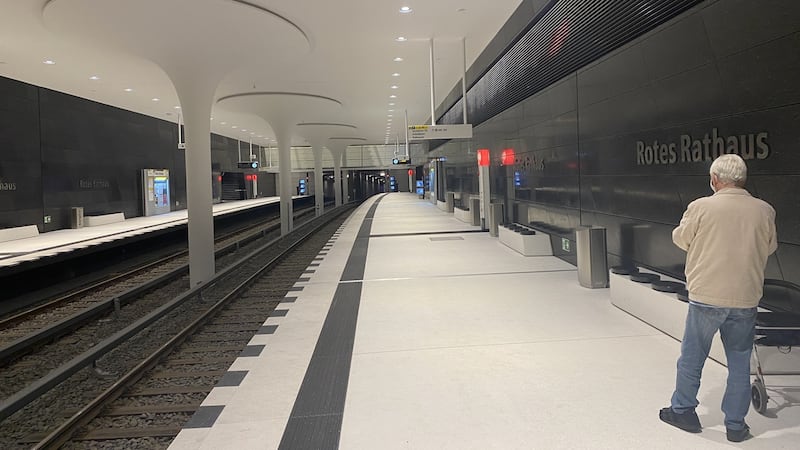The reputation of German engineering has taken a battering in recent years in Berlin. Nine years late, the capital's cursed international airport opened its doors last month after an eye-watering series of building disasters.
In recent days, with little fanfare, Berlin has just opened a long-awaited extension to its U-Bahn network. The city’s U5 line has grown by six stations, running from Alexanderplatz in the eastern city centre to the new central train station near the government quarter.
The mammoth €540 million project began a decade ago and hit its first snag almost immediately. Builders discovered medieval ruins in the ground beside the Rotes Rathaus, the historic “red” town hall, and the first station on the line.

After years of careful but time-consuming archaeological work, the city was ready to bring in the big gun in 2014 with “Bärlinde”. A giant tunnel digging machine – 74 metres long, weighing 700 tonnes – Bärlinde looked like a giant mechanical caterpillar with a 7m-wide head. Her party trick: eating away the earth before her and depositing it out the back. As she worked her way underneath Berlin, Bärlinde coated the hole she ate with concrete, creating the U-Bahn tunnel as she went.
“You might call her a moving factory,” said project manager Jörg Seegers.
The challenges continued a few hundred metres down the line. First construction engineers had to ensure the stretch around the next station, under the city’s historic Museum Island, didn’t interfere with another major building site: the reconstructed Prussian Palace, which is opening its doors later this month.
That site’s second challenge – how to bore under the city’s River Spree without flooding the tunnel – was solved with remarkable ingenuity: the soil was frozen and then hungry Bärlinde was set to work. The next station – Unter den Linden – is the final engineering masterstroke, with a new station dug and built underneath the existing U6 line, with minimum disruption.
Each station along the way is a one-off design and a long way from bland, functional architecture. The Rotes Rathaus station has elegant mushroom pillars, a nod to medieval town hall pillars discovered during construction. The Brandenburg Gate station has a light art deco feel, its walls telling the dramatic history of the Berlin landmark.
Carrying on to the Bundestag station, passengers are treated to a double-height hall with pillars ending in skylights set into the ground outside the parliament building.
One station yet to open, underneath the Museum Island and the river, is already visible to passengers gliding by. Its striking ceiling – midnight blue and thousands of pin lights – is a nod to the legendary “Queen of the Night” stage set by Berlin architect and designer Karl Friedrich Schinkel in his 1815 production of Mozart’s Magic Flute.
Berliners have embraced the new train stations with characteristic nonchalance.
“I’m still torn in my heart between ‘great stations’ and ‘so much money’,” said Oliver Geissen, a 65-year-old local. His wife Gerlinde was more upbeat: “We live nearby and it’s turned out well: so bright and clean, as it should be in a capital.”
Germany’s U-Bahn network opened in 1902 and the new stations bring the total to 173 across 10 lines. With a total length of 152km, the network carries about 550 million passengers in a regular year – through some of Europe’s most dramatic eras. For nearly three decades of division, some lines were truncated or diverted. Others ran from West Berlin without stopping under East Berlin through so-called “ghost stations” until emerging once more in the west.
U-Bahn enthusiast Patrick Popiol estimates that at least 20 unused stations exist under the city. Some are the result of bad planning – apparently not a new phenomenon in Berlin – while others are linked to Berlin’s own lively history as a capital of both fascist and socialist dictatorships. The greatest number of forgotten stations and tunnels, Popiol says, is linked to Berlin’s history as a former cold war front city.
For decades many West Berliners boycotted the S-Bahn (surburban rail) line, run by the East German state railways, in protest at its division of the city. Eventually West Berlin took over the line.
“In 1970s West Berlin built underground train stations to run in parallel to the S-Bahn,” said Popiol.
While those stations remain dormant, the 2.2km new stretch gives Berlin commuters and visitors a new way to get around the historic centre of Berlin. And German engineers can breathe a sigh of relief: their professional honour has been restored.



















